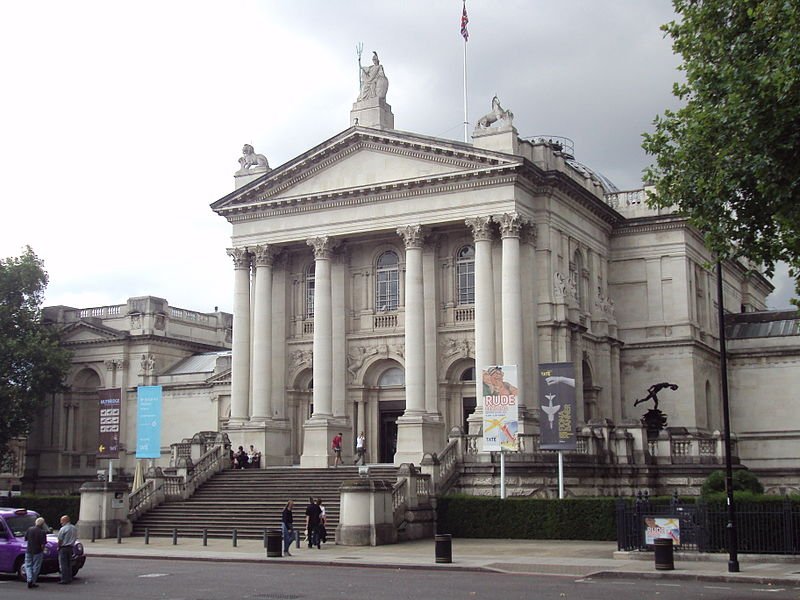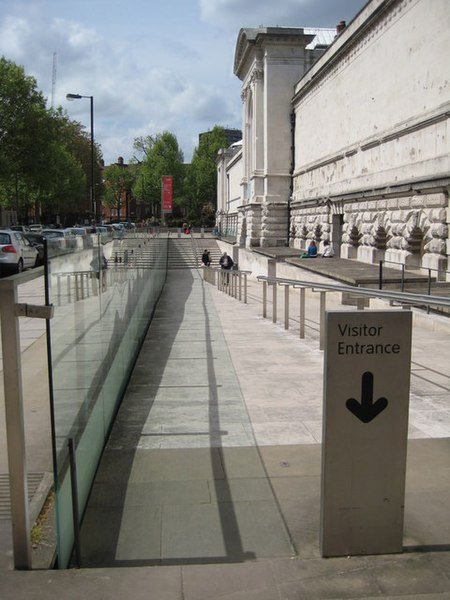Take a Look: The Tate Britain and Henry Moore
Our previous administration assistant, William, has been continuing his travels abroad in the United Kingdom, and has recently spent some time at the museums and galleries of London. Let’s hear what he has to say about his visit to the Tate Britain.
My first trip to London was in February to visit a friend of mine from high school days. London is only about 1 hour by bus, or approximately 40-50 minutes by train, from Oxford – so it’s an easy day trip. The bus continues to run through the night as well, ferrying students, academics, and locals who have been for a day out (or a big night) in London.
One of the most incredible aspects of life in London is how all the major public cultural institutions – art galleries, museums and old libraries – are free to enter and browse. And many of them are located within walkable area within London. In my short trip there, I was lucky enough to visit the British Museum, the V&A Museum, the Natural History Museum, and the Tate Britain and Tate Modern. It was my trip to the Tate Britain and the Henry Moore collection housed there that brought me back to thinking about sculpture, TBSSS, and another blog post!
The Tate Britain sits alongside the Thames in an area known as Millbank, which is a short walk south, down the river from the Westminster district. The building is another striking white stone building (oh which there are no shortages of in London), with a classical portico and central dome. The gallery, originally named the National Gallery of British Art, was built on the site of the former Millbank prison. It is only since 1932 that the museum has been officially known as the Tate Gallery or Tate Britain. The building has been renovated several times since opening, including to repair damage done to the outer structure during World War II, but its most significant renovation occurred in 2012 after the Gallery raised £45 million from its members. This resulted in the opening of nine new galleries and the installation of the modern entrance, which is located on the left-hand side of the main building, as part of a modern annex. I was visiting on a Sunday, and by 9.50am (it opened at 10am) a sizeable group of us had assembled at the side door, waiting to enter…
Many people do not realise that The Tate is not a single museum, but a collection of four museums scattered throughout the United Kingdom: Tate Britain, Tate Modern (located further up the river, on the opposite side, near South Bank), Tate Liverpool (in Liverpool), and Tate St Ives (in Cornwall). The four museums are named after Sir Henry Tate (1819-1899), a British sugar magnate, whose donations of art formed the majority of the initial collection, and who also the majority of funds to build the original Tate Brain. In recent times, Sir Henry’s potential links to the colonial slave-economy has been the subject to much debate – plaques placed throughout the museum confirm that while he was not a slave trader himself, the Gallery acknowledges that it is ‘impossible to separate the Tate galleries from the history of colonial slavery from which in part they derive their existence’ (see here for further information).
The Tate Britain is perhaps most famous for housing the largest collection of paintings by JMW Turner (1775-1851) that is freely available to the public anywhere. The collection, housed in the modern Clore Gallery throughout nine separate rooms, tells a clear story of Turner’s initial imitation of the old masters, and moving gradually towards his signature style – looser brushwork, his uncanny ability to manipulate light, and his life-long fascination with the sea. I first encountered Turner’s painting at the National Gallery of Australia in Canberra as a young adult and was fascinated with the way Turner depicted light penetrating a cloudy sky and reflecting off turbulent sea. I spent almost two hours in these galleries taking it all in.
However, of more interest to sculptors may be the fact that Tate Britain owns over 600 sculptures by renowned avant-garde sculptor Henry Moore! There are currently two large rooms dedicated to displaying some of the famous sculptures in the collection.
For those that need a refresher, Henry Moore (1898 – 1986; a contemporary of Barbara Hepworth’s) emerged as a leading avant-garde sculptor in the 1920s, and secured his reputation on the international stage by winning the 1948 Venice Biennale. Famous for his abstract monumental public sculptures, Moore developed a unique, simple approach to form (and a taste for the monumental) that has been previously explored in TBSSS teacher Christine Crimmins’ previous post reviewing Philip James’ book Henry Moore on Sculpture. Have a read!
Two wonderful examples of Moore’s unique style are his pieces Recumbent figure and Reclining figure, pictured below (both on display at the Tate). Both resemble posed human figures, and you can make out body parts - but the figures have been simplified, smoothed and abstracted, into a single organic form. As Christine explains in her review, much of Moore’s inspiration came from organic materials: skulls, bones and wood. Moore is also well-known for his primitive-style masks and work inspired by other cultures.
Moore had a unique relationship with Tate Britain. He held two large retrospective exhibitions there in 1951 and 1968 and sat on the Board of Trustees for a time. The last major exhibition of his work was held there in 2010.
Scattered throughout space, the two galleries provided an ideal setting for appreciating some of the bigger works. My two personal favourites were (1) the slightly more abstract Two Piece Reclining Figure No. 2, in which the 1951 concept is reconceived in a shearer, blockier form; and (2) Moore’s large-scale female nude, Woman, described by a Toronto curator as ‘one of the most potent images of fertility produced in the 20th century’. Both are pictured below.
For those of you ever in London, I highly recommend visiting Tate Britain to see some great sculpture!
Images
(1) Top-L: The classical façade of the Tate Britain, in Millbank, viewed from the bank of the Thames (source: Wikimedia commons); Top-R: the side entrance to the Tate Britain (source: Wikimedia commons)
(2) L: Sir Henry Tate, a black and white photograph (source: Wikimedia commons); R: A blue ‘English Heritage’ plaque commemorating Sir Henry Tate in Birkenhead, Merseyside (source: Wikimedia commons)
(3) L: JMW Turner, Norham castle, sunrise (oil on canvas, c 1845) (source: Wikimedia commons); R: JMW Turner, Self portrait (1799) (source: Wikimedia commons)
(4) L: Henry Moore, Recumbent figure (1938) (source: Wikimedia commons) R: One of the Henry Moore galleries at the Tate Britain. The sculpture in the foreground is his iconic Reclining figure (1951) (source: Wikimedia commons)
(5) Henry Moore, Two Piece Reclining Figure No 2 (1960) (source: Tate Britain)
(6) Henry Moore, Woman (1957-58) (source: Wikimedia commons)
Words by William Jackson









